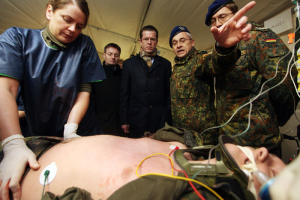This Thursday, at The Hub in Philadelphia, US veterans will have an opportunity to fund their entrepreneurial dreams as a part of the Greater Philadelphia Veterans Network’s (GPVN) 2nd Annual Veteran Entrepreneur “Shark Tank” Business Pitch Event. One company pitching its business plans to the city’s local CEOs is Osiris Biomed 3D, a startup hoping to create 3D printed patient-specific implants.

CEO of Osiris, Dr. Theodore Gerstle, says of his business, “As veterans and health care providers we are passionate about improving patient care and providing improved solutions and better outcomes for trauma patients. 3D medical device printing provides many opportunities to improve patient care, as well as decrease health care costs. We believe we are uniquely positioned to bring lifesaving and life improving changes to the current standard of care for military and civilian patients alike. We are very grateful for the opportunity to pitch our business plan to the GPVN’s panel of judges.”
The company does not explicitly outline how they might be capable of scanning a patient, designing, 3D printing, and installing an implant all in the course of a surgery or if they have developed any prototypes in that direction, but, if they do have the means for pulling it off, it’s possible that everyone in the audience at the GPVN event will be throwing money their way.


